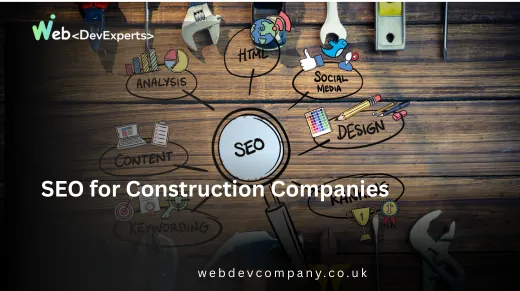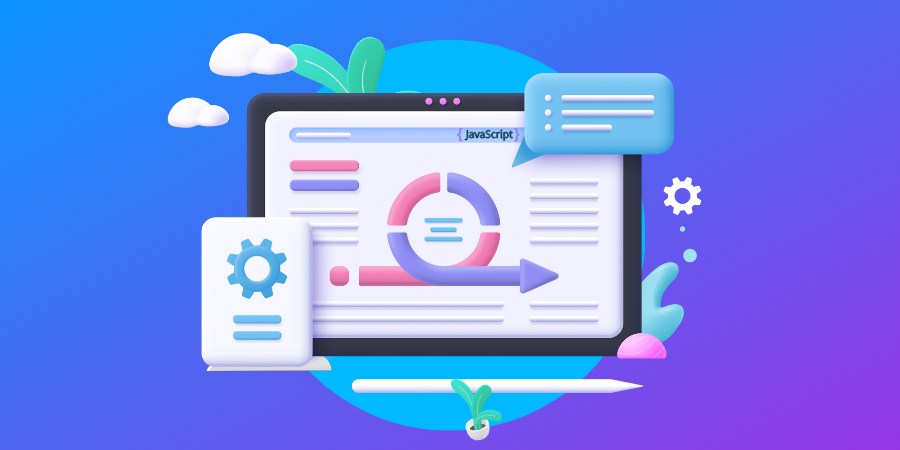Introduction
In the fast-paced digital world, the need for a stunning, responsive, and user-friendly website or app is undeniable. However, not every business has the time, budget, or expertise to build a front end development team in-house. This is where Front End Development Outsourcing comes into play.
Front End Development Outsourcing is a popular strategy that allows companies to hire external experts to handle the user interface and experience aspects of their digital products. This approach can bring numerous benefits, from cost savings to faster project delivery, and access to cutting-edge technology and talent.
In this detailed guide, we’ll dive deep into what Front End Development Outsourcing is, why it matters, how to do it effectively, and how it can transform your business. Whether you’re a small startup or a large corporation, this guide will provide you with valuable insights and practical steps to succeed.
What Exactly Is Front End Development Outsourcing?
To start with the basics, Front End Development Outsourcing means contracting out the development of the parts of a website or app that users directly interact with. This includes everything from the layout, menus, buttons, animations, and responsive design, to the overall look and feel of your digital presence.
Instead of building an internal team, you hire skilled professionals or agencies outside your organization. These experts specialize in technologies such as HTML, CSS, JavaScript, React, Angular, or Vue.js to create seamless user experiences.
By outsourcing, you gain access to talented developers who can build efficient, attractive, and scalable front ends without the overhead of recruiting, training, and managing an in-house team.
Why Is Front End Development Outsourcing Becoming So Popular?
More businesses are opting for Front End Development Outsourcing for several compelling reasons. Let’s explore these motivations:
1. Cost-Effectiveness
Building a front end development team can be costly. Hiring, salaries, benefits, office space, and ongoing training add up quickly. Outsourcing reduces these expenses by letting you pay for only the work done or on a project basis, often at a fraction of the cost.
2. Access to a Global Talent Pool
The tech industry is vast and diverse. With Front End Development Outsourcing, you’re not limited to local talent. You can tap into specialized developers worldwide who have experience with the latest front end frameworks and trends.
3. Faster Project Delivery
Experienced outsourcing teams bring speed. They have established workflows and tools that enable them to start quickly and deliver results faster than new internal teams. This advantage helps your business stay competitive by getting products to market sooner.
4. Flexibility and Scalability
Outsourcing allows you to scale your team up or down based on project needs without long-term commitments. This flexibility is ideal for startups and seasonal projects that require temporary boosts in workforce.
5. Focus on Core Business
When you outsource, your internal team can focus on core business functions such as marketing, product strategy, and customer relations, while experts handle technical front end tasks.
Debunking Common Myths About Front End Development Outsourcing
Despite its popularity, some misconceptions still surround Front End Development Outsourcing. Let’s clear them up:
- Myth 1: Outsourcing Means Losing Control
In reality, with good project management and communication, you remain fully in control. Tools like Slack, Jira, and Zoom allow you to stay connected and oversee progress easily. - Myth 2: Outsourced Quality Is Poor
Professional outsourcing firms often have stringent quality standards. Many specialize in front end technologies and deliver products that exceed client expectations. - Myth 3: Outsourcing Is Only for Large Companies
Small and medium businesses can greatly benefit. Outsourcing offers access to expert skills without the burden of full-time employment.
How to Choose the Right Partner for Front End Development Outsourcing
Choosing the right outsourcing partner is critical for success. Here’s a step-by-step approach:
Step 1: Understand Your Project Needs
Begin by clearly defining your project scope, technology preferences (React, Angular, Vue.js), budget, and timeline. Having a detailed project brief helps potential partners provide accurate proposals.
Step 2: Research Potential Vendors
Look for agencies or freelancers with proven experience in front end development. Review their portfolios, case studies, and client feedback. Pay attention to projects similar to yours.
Step 3: Check Technical Expertise
Verify if the team is proficient in the frameworks and tools your project requires. Ask technical questions or request small sample tasks to assess skills.
Step 4: Evaluate Communication Skills
Effective communication is essential for Front End Development Outsourcing success. Choose partners who are responsive, transparent, and proactive in updates.
Step 5: Request Proposals and Quotes
Gather detailed proposals outlining timelines, costs, milestones, and post-launch support. Compare carefully to choose the best fit.
Step-by-Step Guide to Successful Front End Development Outsourcing
Outsourcing your front end development can feel daunting, but following this roadmap will help:
Step 1: Kickoff and Planning
Start with a kickoff meeting to align goals. Share wireframes, designs, and business requirements. Clarify expectations and deliverables.
Step 2: Set Up Communication
Agree on daily or weekly check-ins through tools like Slack, Microsoft Teams, or Zoom. Use project management software to track tasks and bugs.
Step 3: Define Milestones and Deadlines
Break down the project into phases with clear milestones. Regular deliverables allow you to review progress and provide timely feedback.
Step 4: Development Phase
The outsourced team starts coding, focusing on responsive design, cross-browser compatibility, and fast load times.
Step 5: Testing & Quality Assurance
Perform continuous testing on different devices and browsers. Ensure the user interface is smooth, intuitive, and error-free.
Step 6: Launch and Support
Once approved, deploy the website or app. Ensure the outsourcing partner provides ongoing support for fixes and future updates.
Tools That Streamline Front End Development Outsourcing
The right tools ensure smooth collaboration and transparency:
- Version Control: GitHub, GitLab
Track code changes, collaborate efficiently, and revert when necessary. - Project Management: Jira, Trello, Asana
Organize tasks, monitor progress, and meet deadlines. - Design Collaboration: Figma, Adobe XD
Share and review design prototypes in real time. - Communication: Slack, Microsoft Teams, Zoom
Keep conversations flowing and issues resolved quickly.
Anecdote: A Startup’s Journey with Front End Development Outsourcing
Consider the story of “EcoMart,” a startup wanting to build an eco-friendly online store but lacking a front end team. By choosing Front End Development Outsourcing, EcoMart partnered with a small agency overseas.
The agency’s front end developers brought expertise in React and mobile-first design, which was essential for EcoMart’s target audience who shop mostly via smartphones. Despite the time difference, regular meetings and clear documentation ensured smooth progress.
Within four months, EcoMart launched a sleek, responsive website that attracted users and drove early sales. The CEO often credits their decision to outsource front end development as a key factor in their early success.
Common Challenges and How to Overcome Them
While Front End Development Outsourcing offers many benefits, it also presents challenges:
1. Time Zone Differences
Schedule overlapping hours for real-time communication and use asynchronous tools for updates.
2. Cultural Differences
Build mutual understanding with open communication and cultural sensitivity training if needed.
3. Security Concerns
Sign NDAs and use secure data sharing platforms to protect your IP and confidential information.
4. Quality Control
Set quality standards upfront and conduct regular code reviews and testing.
Key Front End Technologies to Know
Understanding popular front end tools helps you communicate better with your outsourcing team:
- React.js: Popular for dynamic, high-performance UIs
- Angular: Comprehensive framework backed by Google
- Vue.js: Lightweight and flexible progressive framework
- Bootstrap: Framework for responsive design
- Sass/Less: CSS preprocessors for maintainable stylesheets
How to Measure the Success of Front End Development Outsourcing
Once your project is live, use these metrics to evaluate the outcome:
- User Experience: Bounce rates, session duration, and user feedback
- Performance: Page load speeds and responsiveness
- SEO Impact: Improved rankings and organic traffic
- Project Delivery: Timeliness and budget adherence
- Maintenance: Ease of updates and bug fixes
The Future of Front End Development Outsourcing
With emerging technologies like Progressive Web Apps (PWAs), WebAssembly, and AI-driven design tools, front end development is evolving rapidly. Outsourcing lets you stay on top of trends without investing heavily in training.
Remote work and digital collaboration tools continue to improve, making Front End Development Outsourcing more accessible and effective for businesses worldwide.
Final Thoughts
Front End Development Outsourcing is no longer just a cost-cutting option—it’s a strategic move that can accelerate innovation, improve user experience, and boost your digital presence.
By carefully selecting the right partners, maintaining open communication, and using effective tools, you can achieve excellent results that align with your business goals.
Remember the story of EcoMart: outsourcing enabled them to launch quickly with a beautiful, functional site that resonated with users. Your business can have similar success.
From a Web Dev Expert’s perspective, Front End Development Outsourcing is not just about handing over code — it’s a partnership that helps build a website or app that









2 Responses
Hi there, for all time i used to check website posts here early in the
morning, as i enjoy to gain knowledge of more and more.!
Hello there! Do you know if they make any plugins to help with Search Engine Optimization? I’m trying to get my blog to rank for some targeted keywords but I’m
not seeing very good success. If you know of any please share.
Thanks! I saw similar blog here: Wool product